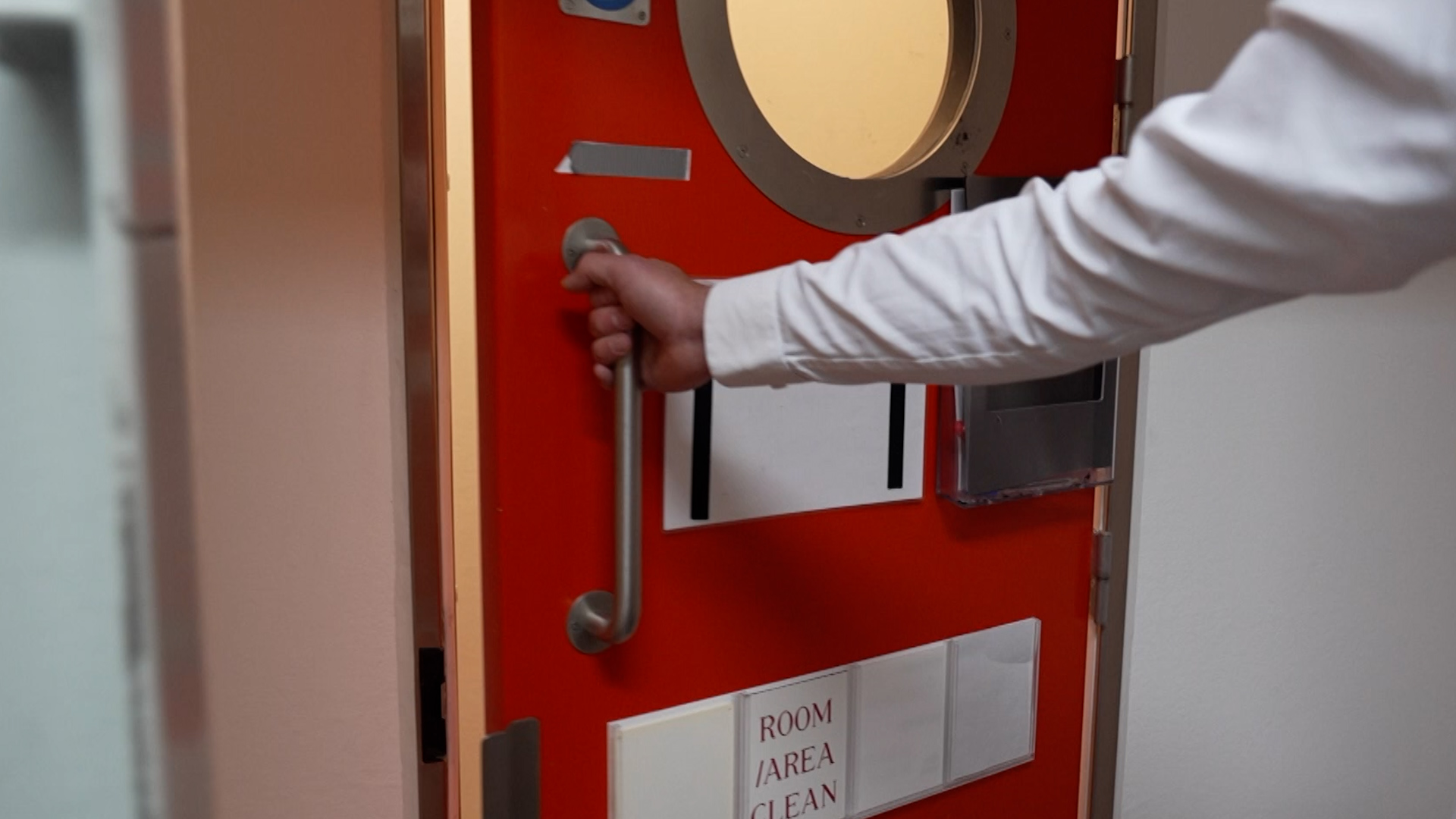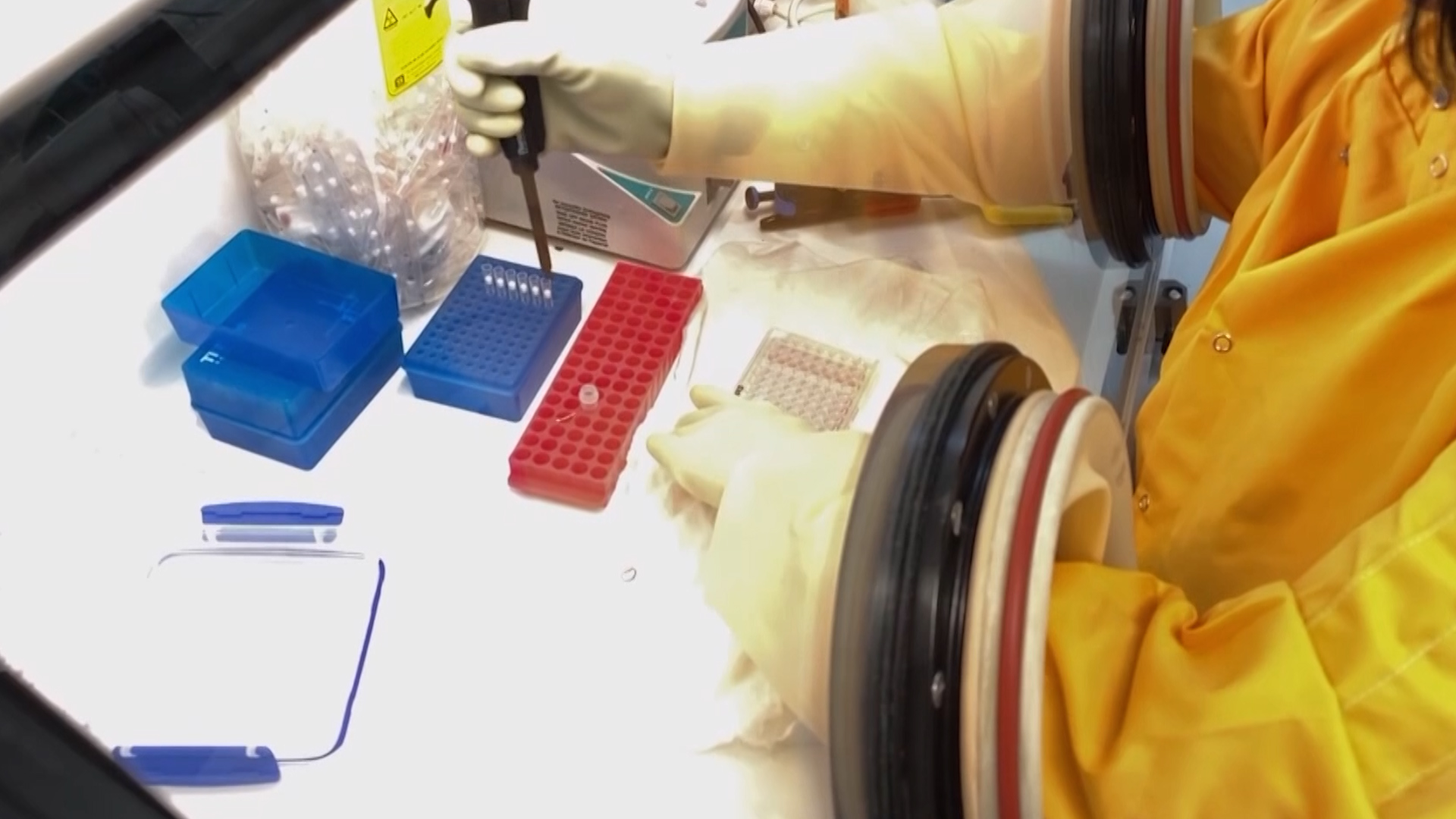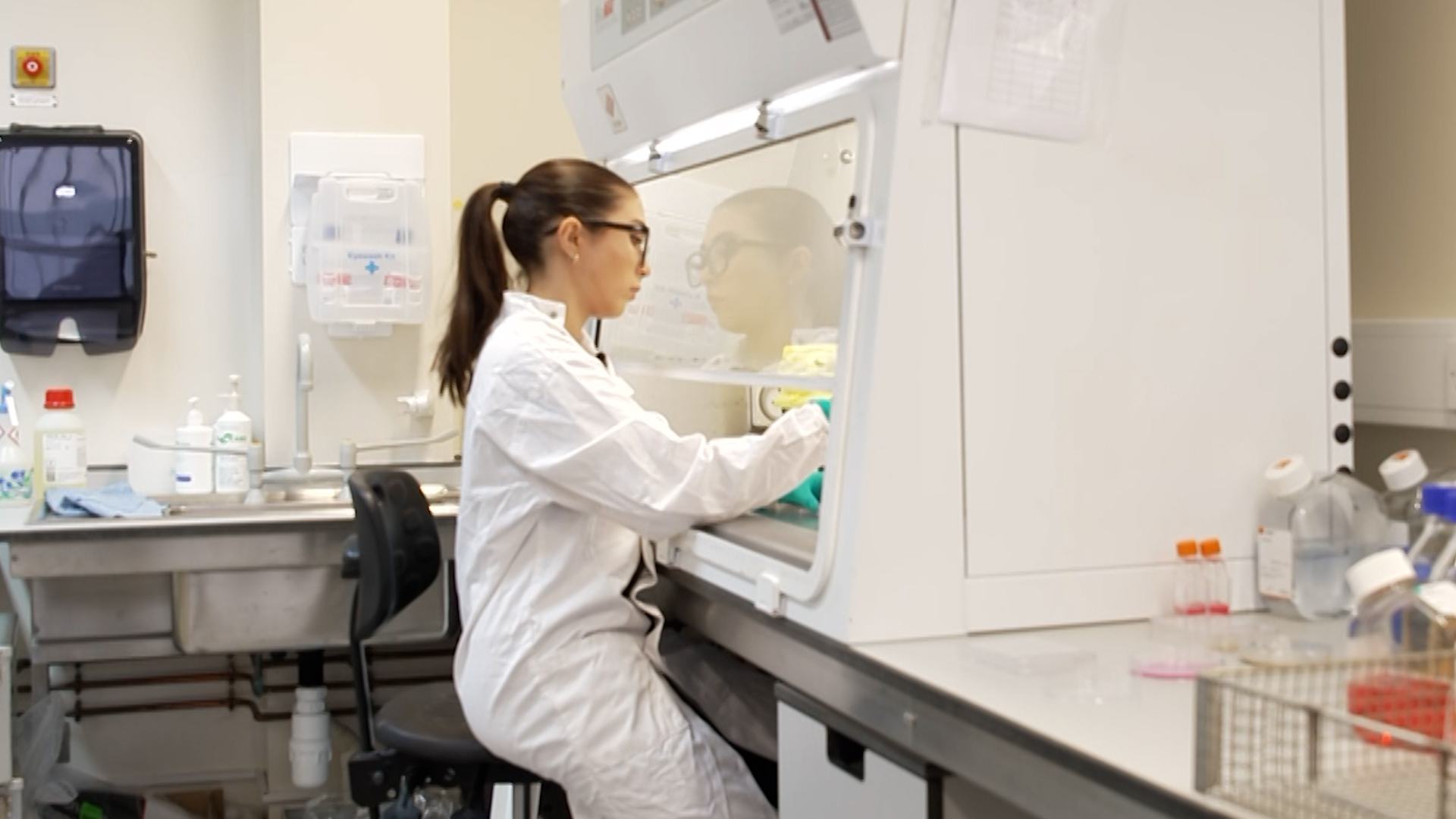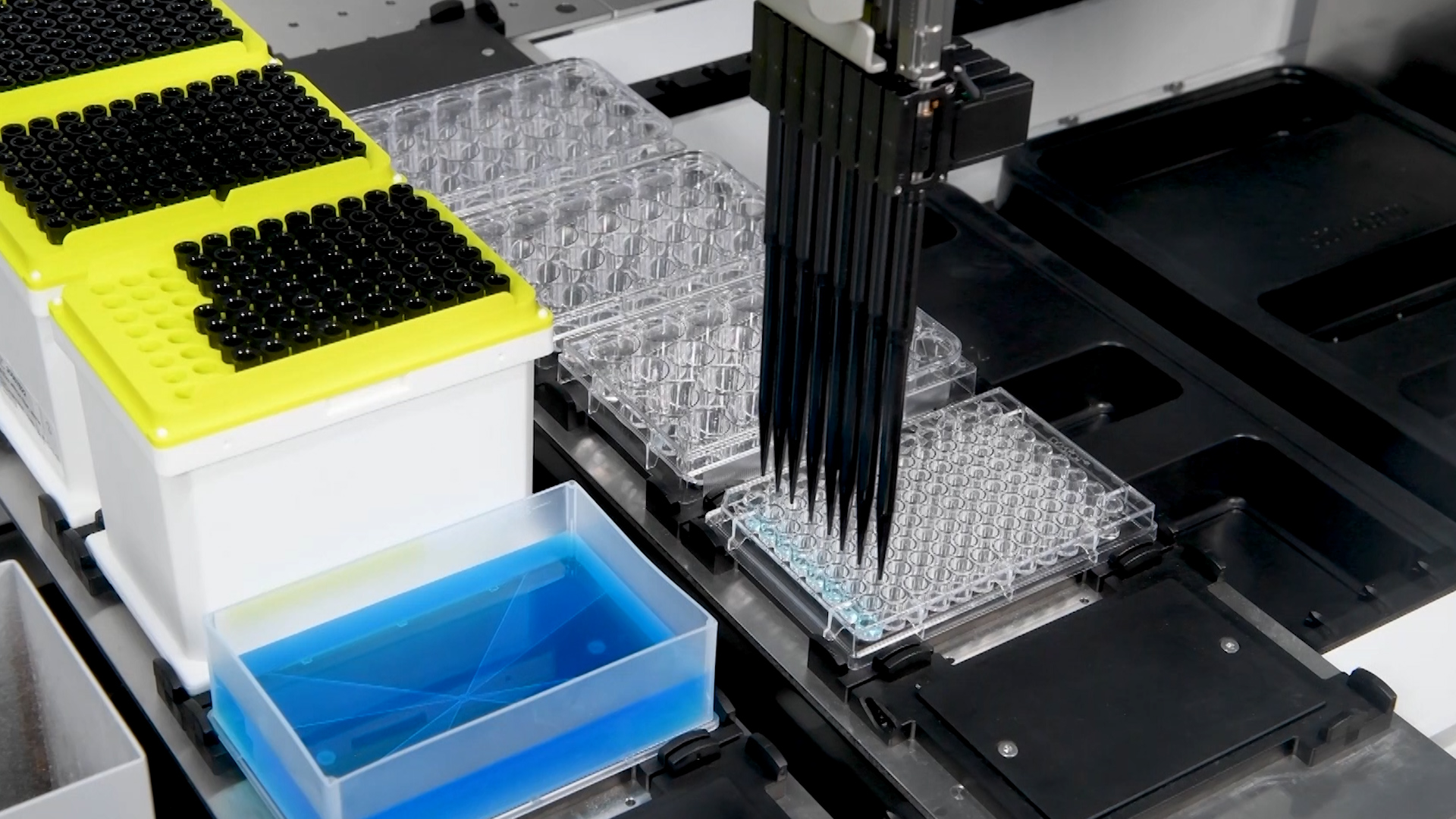Exclusive: Inside the defence lab that deals with the world's most deadly substances
People have been trying to poison each other for millennia so the need for new ways to deal with chemical, biological and radiological threats is as real today as it's ever been.
BFBS Forces News was granted an exclusive look behind the normally sealed doors of Dstl – the Defence Science and Technology Laboratory.
We stepped inside the suits the scientists use to work on the most deadly substances and discover brand-new research which could save personnel from an infectious disease that's plagued the military for decades.
The containment labs at Dstl are laid out in a circle with Level 2 laboratories on the outside for less serious pathogens – and Level 3 and 4 labs in the centre, working on the most hazardous.
The level of containment is indicated by the colour of the door and the lab coat worn by the staff.
Yellow is Level 3 and denotes pathogens like plague or anthrax, while Level 4 red deals with the Ebola and Marburg viruses.

Over the years, Dstl has responded to national and international emergencies, from testing white powder in letters after Anthrax attacks, to screening people for Ebola, the Novichok poisonings and of course work on Covid-19.
Everything they do aims to keep military and civilians safe, preventing and deterring adversaries from using chemical, biological and radiological weapons and giving the UK's Armed Forces an advantage over the enemy.
The scientists who work in the high-containment labs are specialists and must have at least two years of experience working with less hazardous pathogens.

Landscape has changed quite dramatically
Professor Tim Atkins, the chief of CBR (Chemical, Biological, Radiological) has been working at Dstl for more than 20 years.
He told BFBS Forces News that when he started the use of chemical weapons was something which was consigned to history.
"I had to make quite a lot of historical arguments in order to articulate to people why it was important to defend against chemical weapons," he explained.
"Unfortunately, that is not the case anymore. We have seen use of chemical weapons in our lifetimes and allegedly quite close to home. And so I think the landscape has changed quite dramatically.
"The MOD finds itself... in a position currently where science and technology is going to be really, really important for it in the future, both in the near-term future and in its longer-term future.
"And that's to achieve something called operational advantage, because what we're trying to do, of course, is give the military the advantage over our adversaries so that they can win."

The work done by Dstl is diverse and much of it is top secret, but it is not all about lethal substances that might be used against British forces.
When protecting the military, there is one big killer that is often overlooked – infectious diseases.
Prof Atkins said: "Overall infectious diseases are one of the major issues for all armed forces. When they find themselves in conflict, they kill more people than guns, bullets and bombs.
"We live in a world where the climate is changing and we know that that's having an impact on infectious diseases, so about half of all infectious diseases are likely to be made worse by climate change."

Q fever
For decades, scientists have been looking for a cure for a disease called Q fever.
It is caught by breathing dust from the faeces of infected animals and occurs all over the world, particularly in places like Iraq and Afghanistan.
In most cases, symptoms are mild but some are left in a debilitating condition, and have to be medically discharged from the military.
Recent work at Dstl has thrown up some exciting findings, as Cat, a microbiologist who has been working on it, told BFBS Forces News.
"Q fever is a disease, and it's caused by a bacteria called coxiella burnetii," she explained.
Pointing towards a microscope image, she added: "And if we look closely, you can see highlighted in red, these are the bacteria within cells."

The work so far has found a much better version of antibiotics to use on Q fever, and it is already helping treat service personnel who contract the disease, but research is continuing.
Recently Cat has been a different bit of kit – a kind of 'drug robot'.
Scientists fire a whole plethora of existing drugs at it and it analyses each one's effectiveness against the bacterial cells that cause Q fever.
It does it far quicker than a human and it has shown some intriguing results.

Cat added: "We've been using this robot to test thousands of drugs and one of the most interesting things we've found is that anti-inflammatory drugs like ibuprofen and aspirin seem to have a killing effect on the bacteria.
"There's potential for this to be used in the future as a possible therapy combined with antibiotics."
Whether it is finding something as simple as ibuprofen might work on Q fever, or investigating deadly chemicals and pathogens that could be used against us, the work in these labs is crucial – even if much of it cannot be discussed.
Prof Atkins adds: "I wish in a way that I could explain all of the great S and T (scientific and technological progress) that we do.
"I think folks would be quite surprised and quite impressed by a lot of what goes on here... I can't do that for very good reasons."









